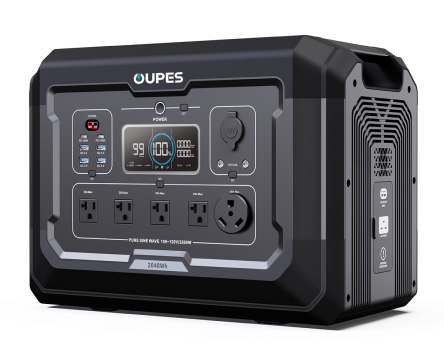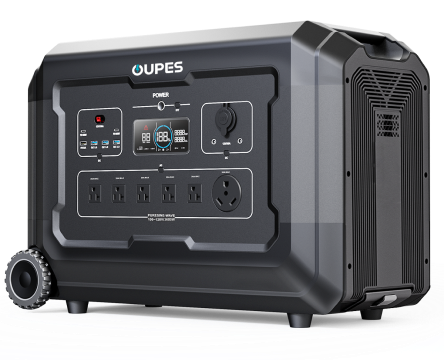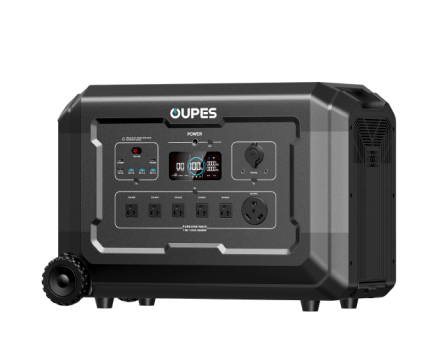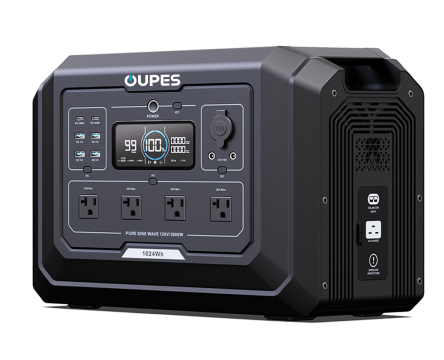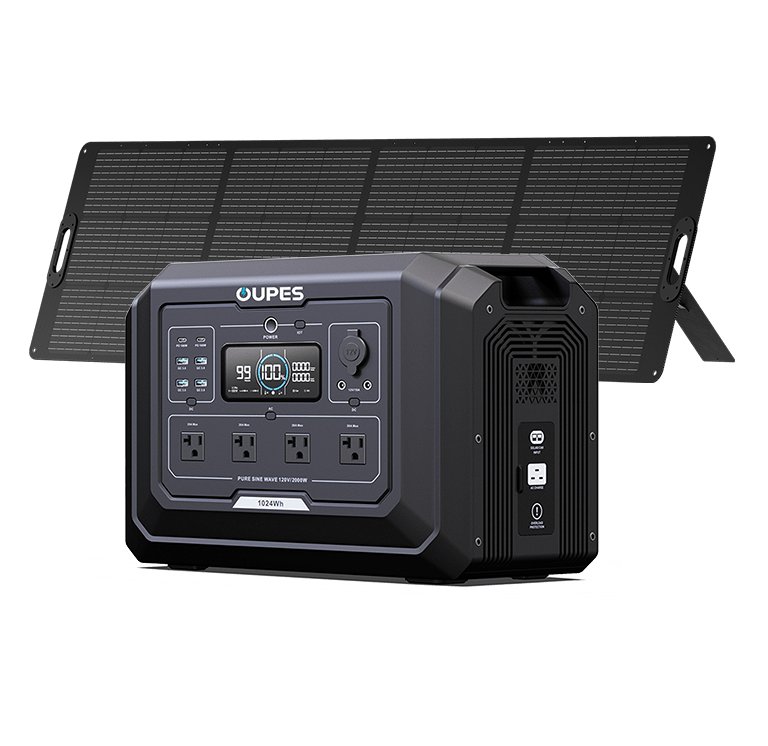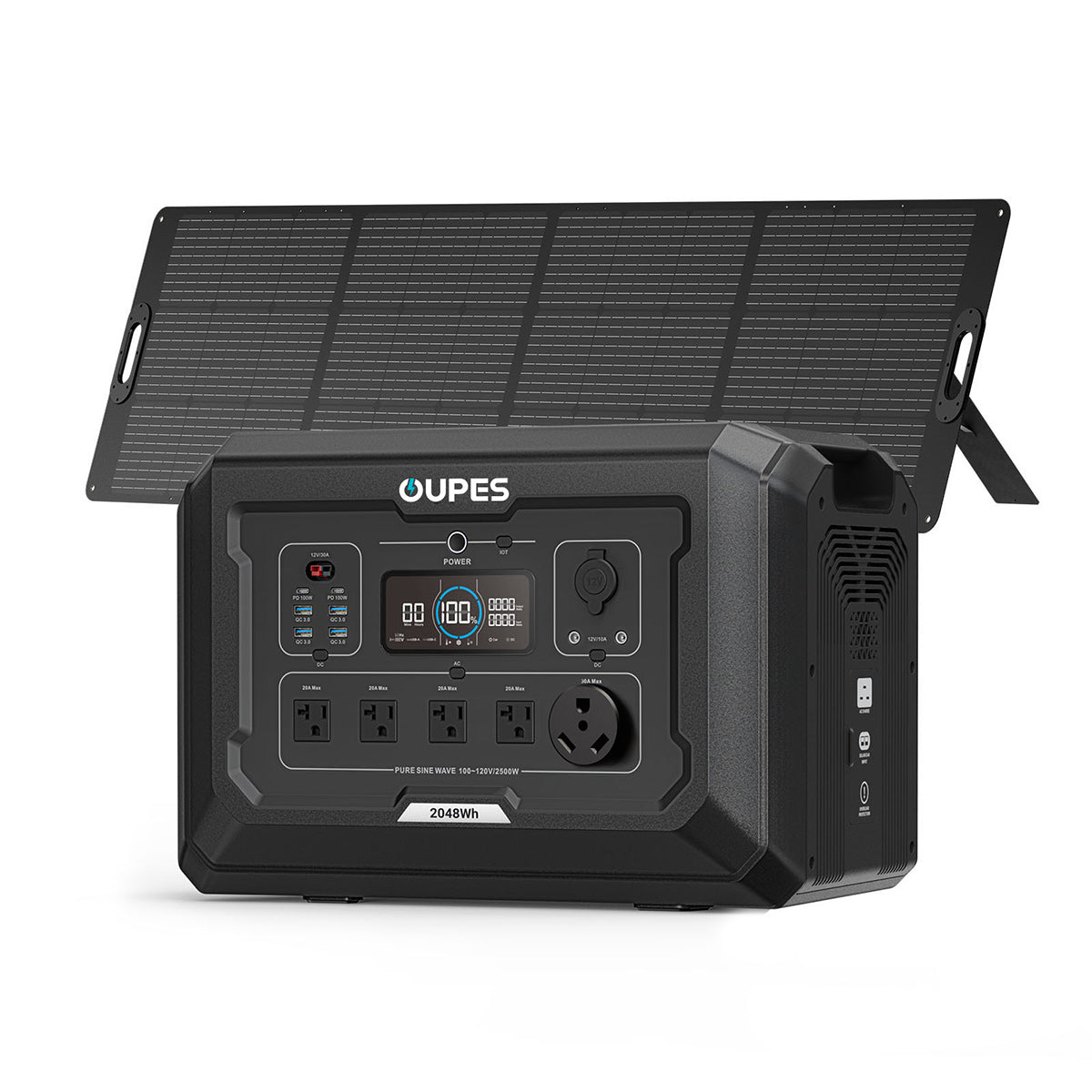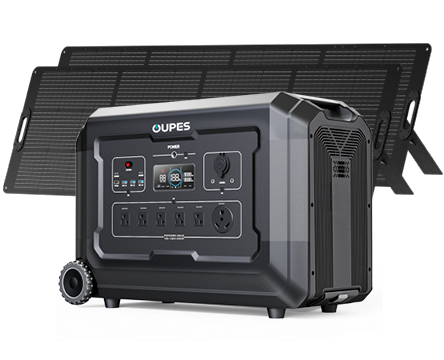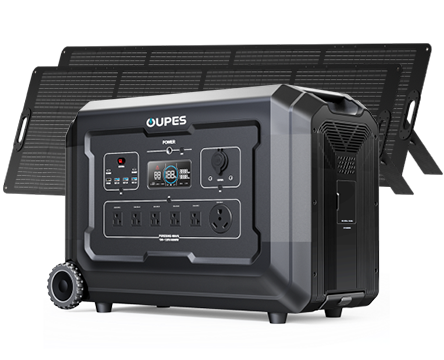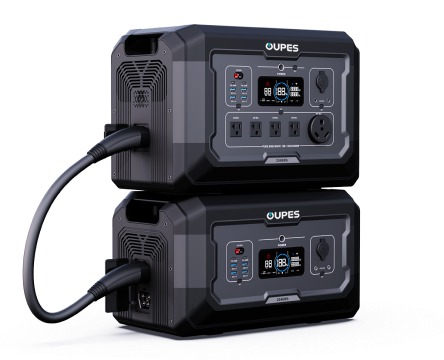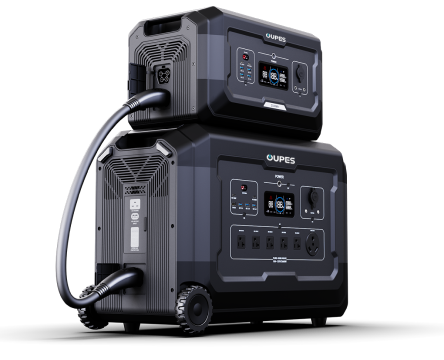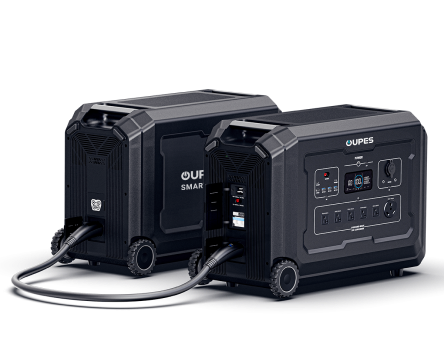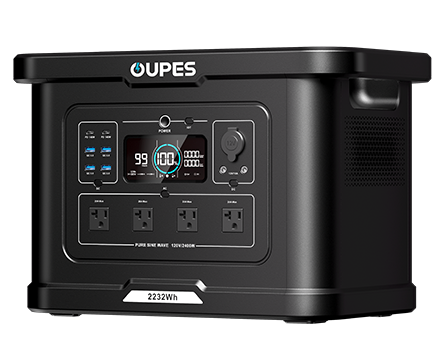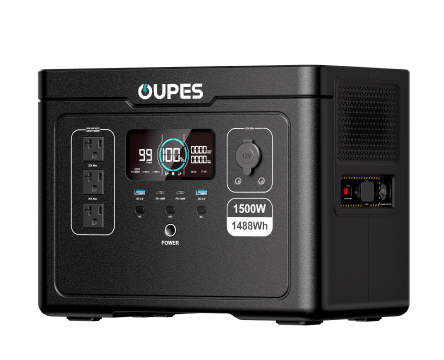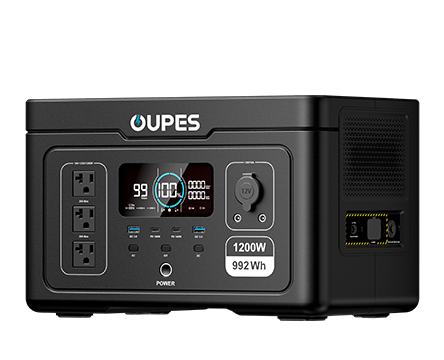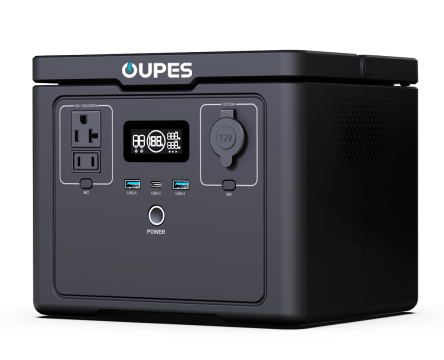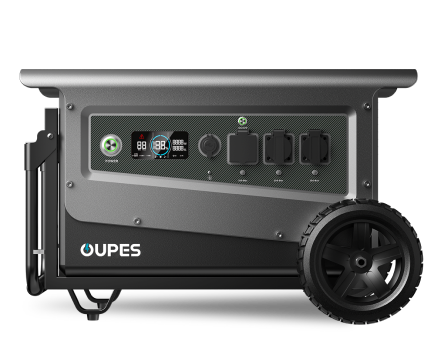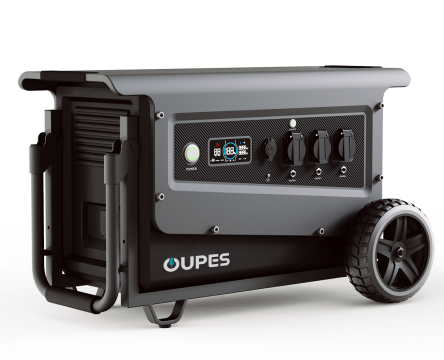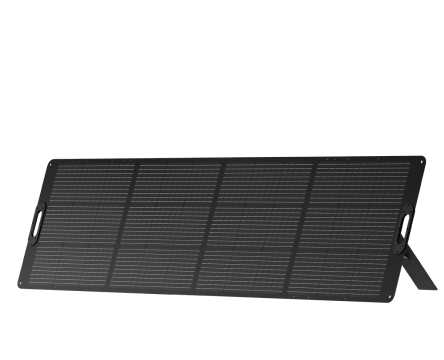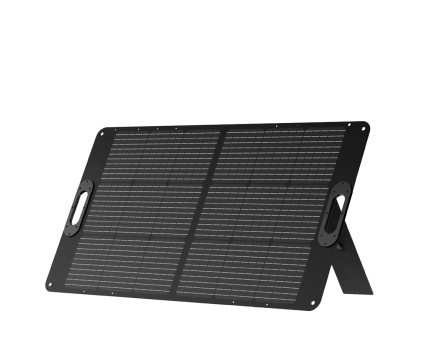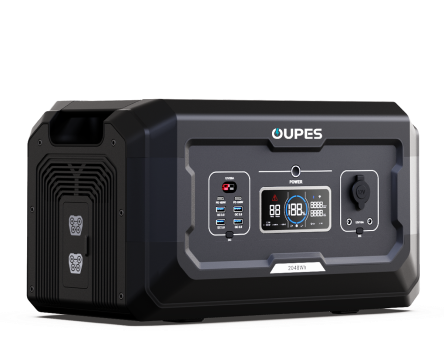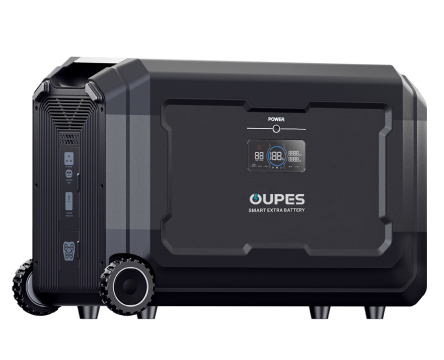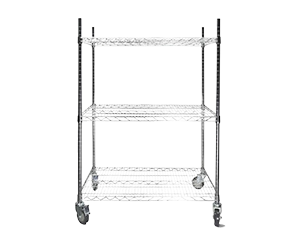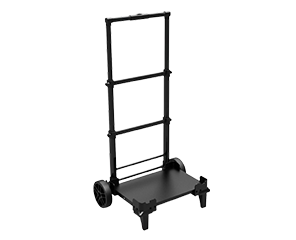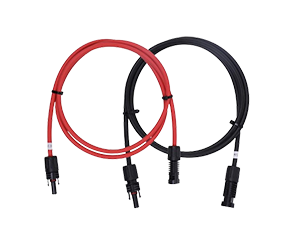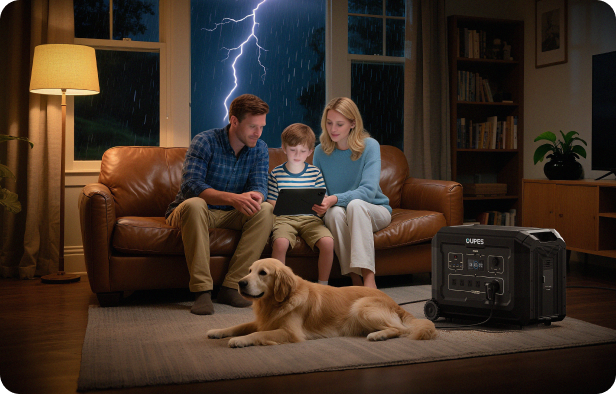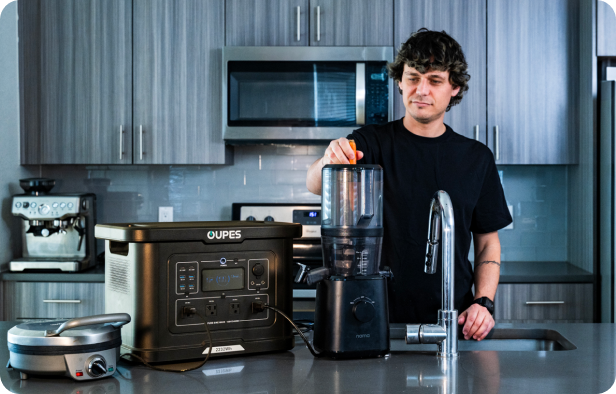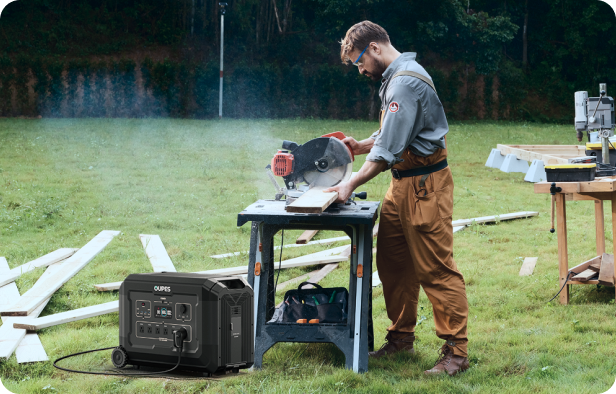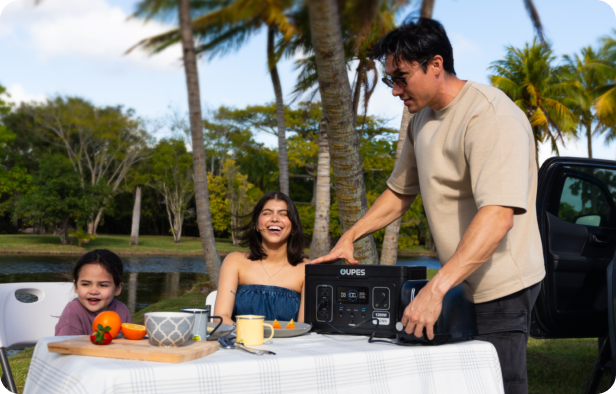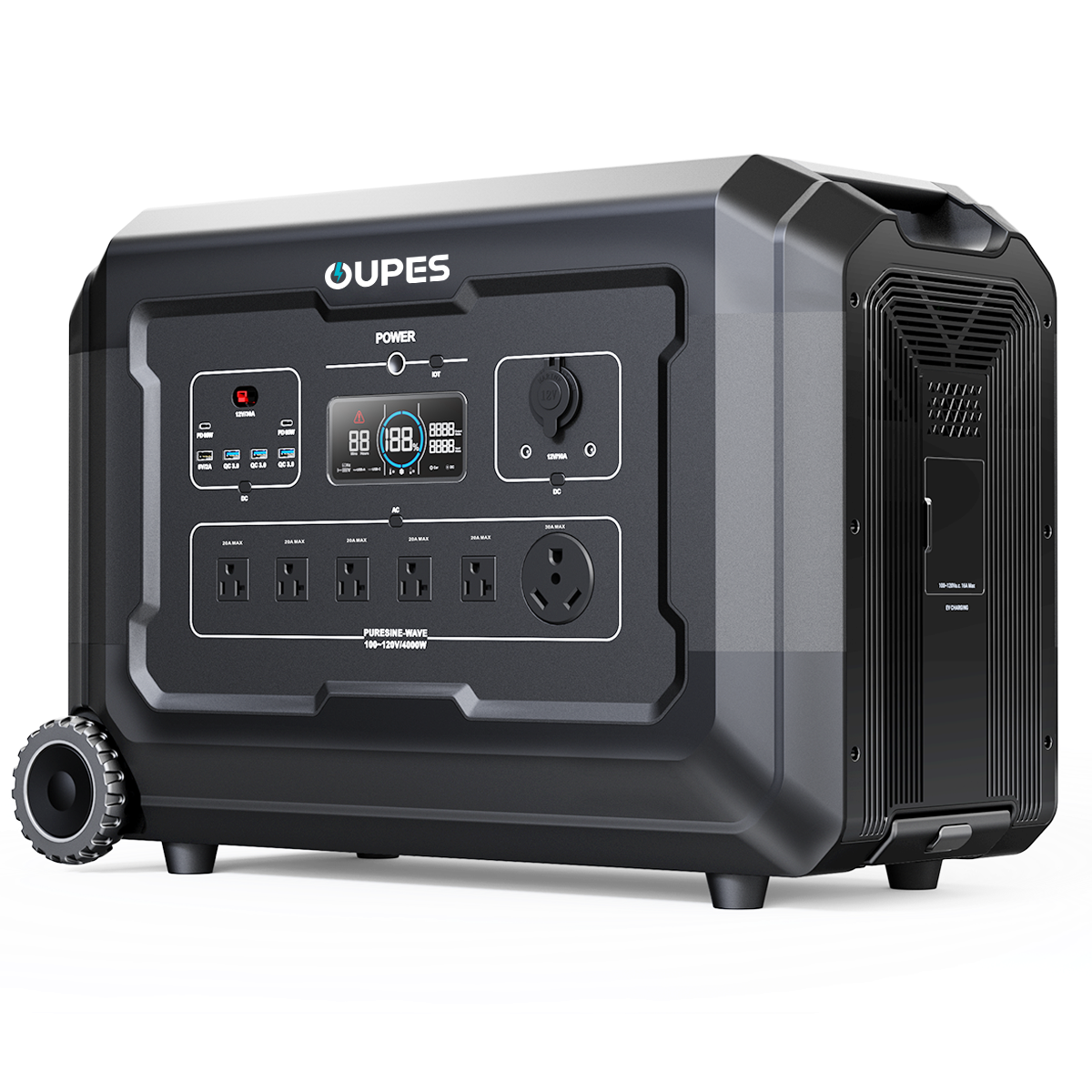
Table of Contents
Introduction
When summer heat strikes or you’re off the grid, powering your air conditioner becomes a challenge. Traditionally, gas generators have been the go-to option, but modern portable power stations and solar generators now provide clean, quiet, and sustainable alternatives. In this guide, you’ll learn how to safely and efficiently run an air conditioner using a portable power station, how to estimate power needs, and how solar energy can help you stay cool without draining your wallet or the environment.
Understanding How Air Conditioners Use Power
Before connecting an air conditioner to your portable power station, it’s crucial to understand how AC units consume electricity. An air conditioner’s power demand varies based on its cooling capacity (measured in BTUs) and energy efficiency.
Common AC Types and Power Ratings
| AC Type | Average Power Consumption (Watts) | Starting Surge (Watts) |
|---|---|---|
| Window Air Conditioner (5,000–8,000 BTU) | 500–900 | 1,200–1,800 |
| Portable Air Conditioner (10,000–12,000 BTU) | 900–1,500 | 2,000–3,000 |
| RV Rooftop AC (13,500–15,000 BTU) | 1,200–1,800 | 2,800–3,500 |
| Mini Split System (9,000–12,000 BTU) | 700–1,200 | 1,500–2,200 |
These numbers highlight why choosing the right portable power station is so important — your power source must handle both the continuous running wattage and the higher surge wattage when the compressor starts.
Calculating Your Air Conditioner’s Power Requirements
To determine whether a power station can run your air conditioner, you need to calculate its total energy draw over time. The key is to convert wattage into watt-hours (Wh), which measures total energy use.
Step-by-Step Calculation
- Find your AC’s running wattage (e.g., 1,000 W).
- Estimate how long you want to run it (e.g., 3 hours).
- Multiply: 1,000 W × 3 h = 3,000 Wh.
So, your power station must supply at least 3,000 Wh of usable energy to operate a 1,000 W air conditioner for three hours. Keep in mind that efficiency losses (inverters, heat) can reduce usable capacity by 10–15%.
How to Choose the Right Portable Power Station
Not all portable power stations can handle the high current required by air conditioners. Here’s what to look for:
1. Sufficient Output Power (W)
Ensure the power station’s inverter supports at least 20% higher than your AC’s running wattage. For example, if your air conditioner uses 1,200 W, choose a model rated for at least 1,500 W continuous output and 2,500 W surge.
2. Adequate Battery Capacity (Wh)
Battery capacity determines how long your AC will run. A 2,000 Wh unit can run a 1,000 W air conditioner for roughly two hours. For longer cooling sessions, consider units in the 2–5 kWh range or expandable systems.
3. Pure Sine Wave Inverter
AC motors are sensitive to waveform quality. A pure sine wave inverter ensures smooth and safe operation without overheating or noise.
4. Solar Charging Compatibility
Choose a power station that supports high-input solar charging (e.g., 800–2,000 W). This enables you to recharge efficiently during the day and power your AC sustainably.
Using Solar Energy to Recharge Your Power Station
Pairing your portable power station with solar panels turns it into a solar generator, allowing you to run your air conditioner off the sun’s energy. This approach is especially useful for RVs, campers, and off-grid cabins.
How Solar Charging Works
Solar panels convert sunlight into DC power, which charges the portable power station’s internal battery. The stored energy can then be converted into AC electricity for your air conditioner or other home appliances.
Example Solar Setup
- 2× 400 W solar panels = 800 W total input
- Charging a 2,000 Wh station takes roughly 3–4 hours of peak sunlight
- Enough energy stored to power a 900 W AC for 2 hours
Environmental and Economic Benefits
By recharging from solar, you eliminate fuel costs, reduce carbon emissions, and extend the life of your generator. Over time, these savings can significantly lower your overall energy expenses.
Estimating Runtime and Efficiency
Use this formula to estimate runtime:
Runtime (hours) = Battery Capacity (Wh) × Efficiency ÷ Load Power (W)
For example:
3,000 Wh × 0.9 ÷ 1,000 W = 2.7 hours of operation.
Remember, environmental conditions affect runtime. High ambient heat, inverter losses, and startup surges all impact actual performance.
Comparison: Portable Power Station vs. Gas Generator
| Feature | Portable Power Station | Gas Generator |
|---|---|---|
| Noise Level | Silent or very quiet | Loud (60–90 dB) |
| Fuel Type | Battery / Solar | Gasoline or propane |
| Maintenance | Minimal | Requires oil, filters, and fuel management |
| Indoor Use | Safe (no emissions) | Not safe indoors |
| Environmental Impact | Zero emissions | High carbon output |
| Cost Over Time | High initial, low running cost | Low initial, high fuel cost |
Best Practices for Running an AC from a Power Station
- Start with an energy-efficient or inverter air conditioner — they consume less power.
- Cool your space before connecting to the power station to minimize load.
- Run your AC at moderate settings (24–26°C or 75–78°F) to save energy.
- Keep doors and windows closed to reduce cooling loss.
- Use fans to improve air circulation and reduce compressor run time.
- Recharge using solar panels during the day for continuous use.
Example: How OUPES Power Stations Support Air Conditioners
Brands like OUPES design high-capacity portable power stations capable of powering heavy-duty appliances such as air conditioners, refrigerators, and power tools. Their advanced LiFePO₄ battery systems provide long lifespan, strong surge support, and fast solar charging. While this article focuses on general principles, OUPES serves as an example of how modern solar power solutions make off-grid cooling practical and reliable.
FAQ
1. Can a portable power station really run an air conditioner?
Yes — if it has enough continuous and surge power output. Smaller stations may only handle small window or mini-split units, while larger models can power full-size ACs for several hours.
2. How big of a power station do I need for an AC?
For a 1,000 W air conditioner, a 2,000–3,000 Wh power station with at least 1,500 W continuous output is ideal for several hours of operation.
3. Can I recharge the power station while running the AC?
Yes, many models support pass-through charging, allowing you to recharge from solar panels or wall outlets while simultaneously powering your AC.
4. Is it safe to use indoors?
Portable solar generators and battery-based stations produce no fumes or emissions, making them safe for indoor use — unlike gasoline units.
5. Will solar panels alone power my air conditioner directly?
Not usually. Solar panels charge the battery in your power station, which then supplies consistent AC power. Direct solar-to-AC setups are rare without large systems.
6. Can I run a window AC and refrigerator together?
Only if your power station supports the combined wattage. For example, a 2,000 W AC plus a 150 W fridge requires at least 2,500 W continuous output and ample battery capacity.
7. How long does it take to recharge using solar?
With 800–1,000 W of solar input, a 3,000 Wh station typically recharges in 3–4 hours under ideal sunlight conditions.
8. Is a solar generator worth the investment?
Yes, especially if you need quiet, emission-free backup power or off-grid cooling for camping, RVs, or emergency situations. The long-term energy savings and independence justify the initial cost.

